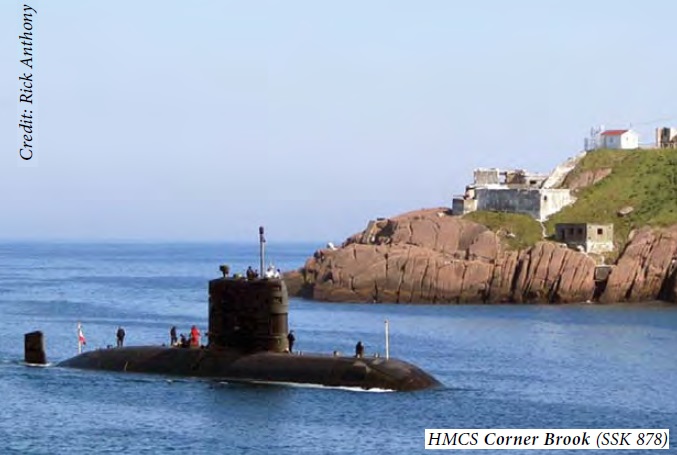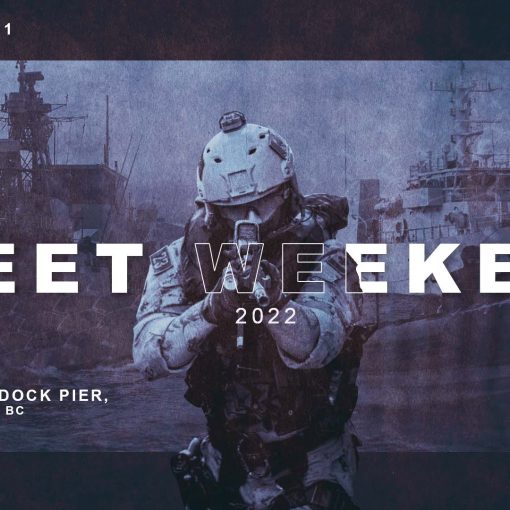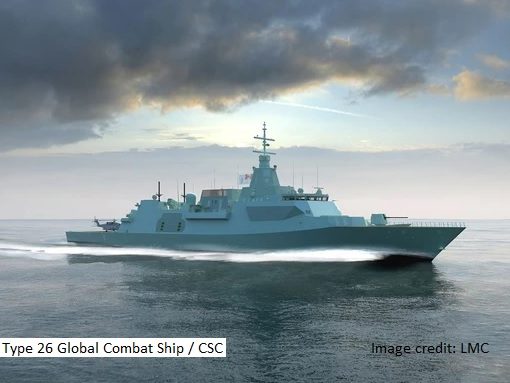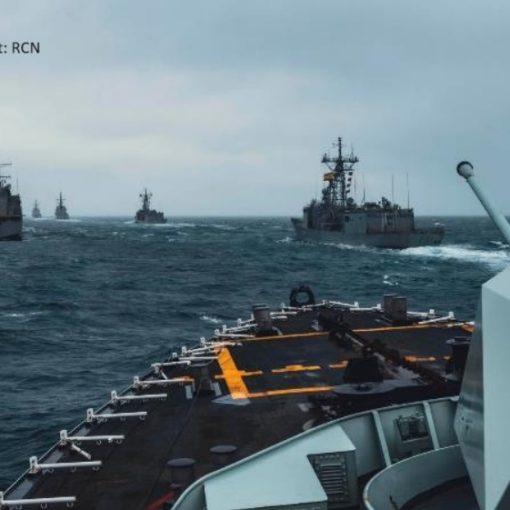Canada has reinvigorated its presence at the Shangri-La Dialogue on regional security, expanded its role at the Rim of the Pacific maritime exercise, and recently signed a mutual logistics arrangement with Japan. Such moves are designed to expand the country’s security engagement in the Asia-Pacific, as leverage to join the region’s emerging institutional architecture, including the ASEAN Defence Ministers Meeting Plus (ADMM-Plus) and East Asia Summit.
So far, however, Canada’s push to gain entry to ADMM-Plus has yielded few results, as Defence Minister Peter MacKay recently discovered to his dismay when he raised the issue at the 2013 Shangri-La Dialogue. To be seen as a more serious Pacific player, Canada could benefit from repositioning additional naval assets to the West Coast – so that the Royal Canadian Navy (RCN) can achieve a more regular and frequent force presence beyond the current limits of WESTPLOY’s rolling deployment pattern and have greater means to expand naval ties with Australia, Japan, and other partners in the Asia-Pacific.
Yet, as I’ve written on The Strategist blog, Canada also faces some long-term challenges to such a re-orientation, not least budgetary constraints on its fleet-replacement plans likely to limit the size of any future naval presence in the region. It also needs to ensure that capability requirements are met for operations in the Western Pacific, not least in such important domains as anti-submarine warfare (ASW), area-air defence, and operational sustainment.
Discussion has even emerged on the potential value of a Canadian naval fleet balance favouring the Pacific in major newspapers on both coasts (see here and here). Such a suggestion was quickly quashed, even if the debate it generated was both valuable and long overdue. Among the most serious criticism was political and economic in nature – namely, the job losses that would inevitably arise from a transfer of naval ships from east to west, which could prove politically contentious for the Conservative government.
Each frigate or destroyer has a crew complement of over 200 personnel, with an even greater number of support and maintenance personnel, so this objection should not be taken lightly. A closely related concern is on basing infrastructure, in so far as any transfer of large surface combatants to the West Coast could require some expensive upgrades to the infrastructure at CFB Esquimalt.
Yet this does not mean all is lost. Canada has some other repositioning options, not all of which would immediately entail significance job losses. For one, the RCN could transfer its two remaining submarines from Halifax to Esquimalt. With this move, Canada would have its entire fleet of four Victoria-class submarines based on the West Coast, even if it would only result in a modest 50/50 fleet distribution on both coasts. Canada already has HMCS Corner Brook based out of Halifax undergoing an Extended Limited Maintenance Period in Esquimalt, making it a potentially opportune time to proceed with this transfer.
Submarines offer some definite advantages for naval operations in this theatre. With their stealthy, speed, and highly manoeuvrability, these platforms are especially well suited to undertake surveillance and intelligence collection—much as the RCN’s old Oberon-class vessels did against the Soviets during the Cold War. These vessels, armed with the advanced Mark 48 Mod. 7 torpedo, also offer a sea denial capability against another country’s surface fleet, in what Paul Mitchell calls their strategic conventional deterrence role. They can also be used in conjunction with a fleet’s surface and air ASW platforms to achieve a degree of sea control.
Another benefit is a submarine’s capacity to operate for several weeks without logistical sustainment—a capability largely absent from surface ships that need at-sea replenishment ships to achieve similar levels of endurance and range. Canada is also limited to a single replenishment ship located on the West Coast. As a result, the RCN might not be able to always rely on a replenishment ship to support its Pacific surface fleet, as demonstrated by the recent collision between supply ship HMCS Protecteur and destroyer HMCS Algonquin that made both vessels temporarily unavailable. Such a potential risk only increases the value and utility of its submarine fleet.
Just as importantly, Canada’s Victoria-class submarines also enjoy a much smaller complement than its frigates or destroyers (48 versus 225 plus), with fewer on-shore support personnel once these vessels finally achieve an “operational steady state” in 2015. As a result, while improving its qualitative capabilities on the West Coast, Canada would be able to avoid much of the economic costs or job losses that would arise when dealing with repositioning surface ships.
Canada could also seek to forward base its submarines to the US naval base in Guam, which would help to ensure a more regular force presence in this expansive maritime theatre and make it easier to strengthen naval ties with key allies. After all, the United States places high value on using these diesel vessels for ASW training. So too do key regional allies like Japan and Australia. As such, Canada might even be able to conclude a forward basing arrangement with the US Navy at relatively little cost, thereby obviating the need to make any infrastructure improvements on CFB Esquimalt to deal with any additional vessels.
Of course, Canada would benefit from having not only submarines but also additional surface ships deployed to the Pacific, not least an Iroquois-class destroyer with its capacity for area-air defence - a capability highly valued in a theatre where the air-breathing threat from anti-ship cruise missiles and potentially ballistic missiles has steadily increased. Indeed, the RCN might have little choice in moving a destroyer to the West Coast, especially if the recent collision forces them to pay off HMCS Algonquin.
Still, the RCN should see a transfer of its remaining submarines and possible forward basing in the Pacific as an important interim measure. Repositioning surface ships will undoubtedly be a more contentious issue. It might behove policy-makers to pursue this move when it is more politically palatable to do so, such as when the Arctic/Offshore Patrol Ships (A/OPS) are finally built and commissioned. After all, A/OPS are better suited to be positioned closer to the Arctic in Halifax rather than Esquimalt, in which case the Canadian government would enjoy greater political flexibility to reposition additional surface combatants to the West Coast.
David S. McDonough is a SSHRC post-doctoral fellow in the Department of Political Science, University of British Colombia and a research fellow in the Centre for Foreign Policy Studies at Dalhousie University.





